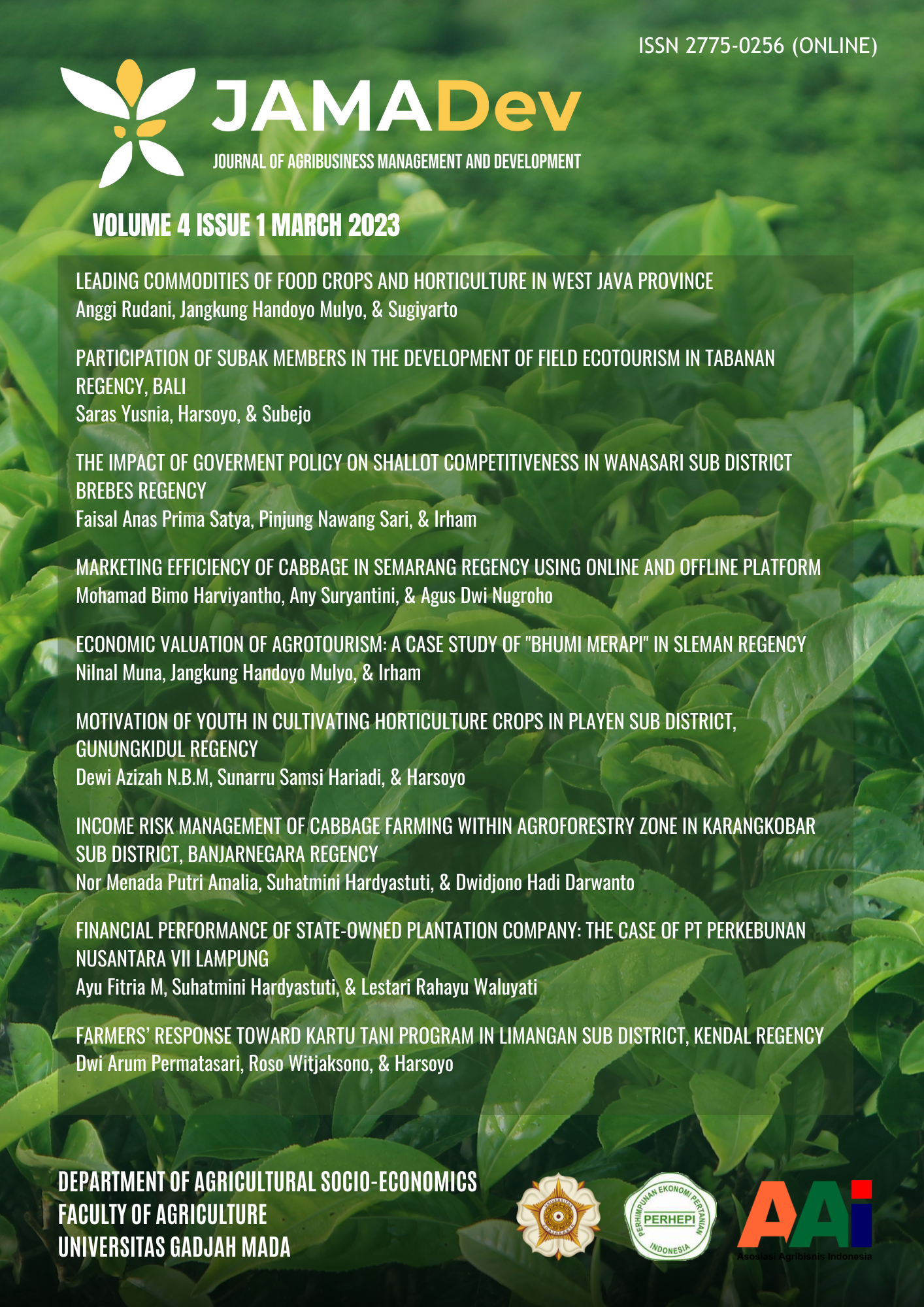English
Isi Artikel Utama
Abstrak
Cabbage is a suitable horticultural crop for cultivation in the Karangkobar Sub-District, Banjarnegara District. The income derived from cabbage farming can be influenced by various internal and external factors. This study has the following objectives: (1) to determine cabbage farm income, (2) to assess the risk associated with cabbage farm income, (3) to identify factors affecting the risk of cabbage farm income, and (4) to explore the strategies used by farmers to manage the risk of cabbage farm income. The research was conducted in Tamansari Hamlet, Leksana Village, Karangkobar Sub-District, and involved a sample of 30 cabbage farmers selected through a simple random sampling method. The analysis methods employed in this study include a one-way ANOVA test to determine cabbage farm income, the use of the coefficient of variation (CV) to evaluate farm income risk, multiple linear regression analysis to identify factors influencing income risk, and the examination of three risk management strategies: ex-ante, interactive, and ex-post. The findings revealed the following results: (1) The highest cabbage farm income was observed during the dry season, while the lowest income was recorded during the rainy season. (2) The rainy season presented the highest risk of cabbage farm income. (3) Factors such as age, farming experience, and land area were found to influence the risk associated with cabbage farm income. (4) Cabbage farmers have implemented three distinct risk management strategies, namely ex-ante, interactive, and ex-post strategies, to mitigate the risks associated with cabbage farm income.

